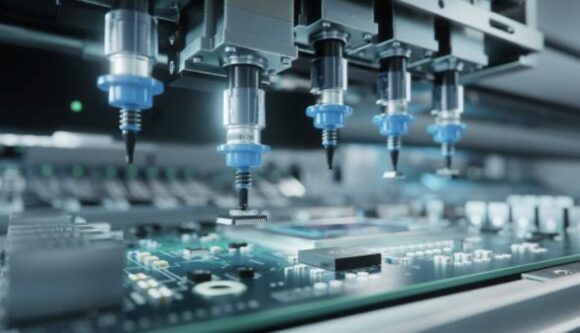China’s aggressive spending spree on semiconductor manufacturing equipment is raising alarms about a potential future surplus in the chip industry. In a dramatic shift, China’s investment in chipmaking tools has outpaced the combined spending of major tech economies including the U.S., South Korea, Taiwan, and Japan in the first half of 2024, according to a new industry report.
Beijing’s strategy, fueled by a drive towards chip self-sufficiency, aims to mitigate the risks posed by Western technology restrictions. China poured an astonishing $24.73 billion into chip production equipment from January to June 2024. This figure eclipses the combined expenditure of $23.68 billion by the aforementioned tech hubs during the same period.
The surge in China’s investment follows the U.S. imposition of tighter export controls on semiconductor technology in October 2022. Spending on chip manufacturing equipment in China leapt from $28 billion in 2022 to $36.6 billion in 2023, with projections suggesting this year’s total will exceed $35 billion. This trend is expected to continue through the latter half of the year, though a slowdown is anticipated in 2025 as the industry adjusts to the new capacity.
The Perils of Overcapacity
China’s aggressive acquisition strategy is raising concerns about a potential oversupply in the semiconductor market. Clark Tseng, senior director at SEMI, warns that this overinvestment could lead to “inefficient or underutilized capacity,” which might create pricing pressures and disrupt the market for global competitors.
Currently, China excels in producing older-generation chips, those with nodes of at least 20 nanometers. These chips are commonly used in everyday electronics like consumer gadgets and automotive parts. While China is making significant strides in this area, it still faces considerable challenges in advancing to the production of more sophisticated chips, which feature smaller transistors and offer enhanced processing power.
Advanced chip production remains a significant hurdle for China due to U.S. export restrictions on extreme ultraviolet (EUV) lithography tools—essential for manufacturing cutting-edge semiconductors. Despite efforts to develop this technology domestically, progress has been slow and costly. The Huawei Mate 60 Pro smartphone, which boasts a 7-nanometer chip made without EUV tools, represents a notable achievement but is still less efficient and more expensive compared to advanced manufacturing processes.
Stockpiling and Strategic Moves
China’s buying spree may also be a strategic maneuver to preemptively stockpile equipment in anticipation of potential future restrictions from the U.S., especially with the upcoming presidential election. Despite stringent export controls, China remains a crucial market for many semiconductor equipment manufacturers. For instance, ASML, a leading Dutch semiconductor equipment maker, saw its revenue from Chinese clients surge from 17% in late 2022 to 49% in the second quarter of this year.
Other major players, such as Tokyo Electron and Screen Holdings, also reported that over 40% of their revenue in the second quarter came from China, indicating robust demand. In fact, SEMI data reveals that semiconductor equipment sales to China reached $12.21 billion in the second quarter, a stark contrast to $4.52 billion to South Korea, $3.9 billion to Taiwan, and $1.61 billion to Japan.
As China continues its massive investment in chipmaking infrastructure, the semiconductor industry must brace for potential shifts in supply and demand dynamics. The current buying frenzy could set the stage for an overcapacity crisis, influencing global pricing and competition in unforeseen ways.




